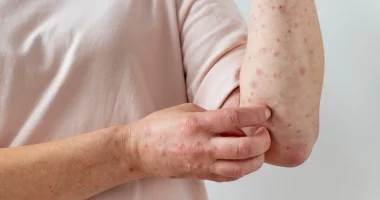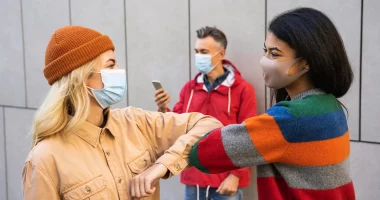Acinetobacter is a genus of bacteria known for its resistance to numerous kinds of antibiotics, posing significant challenges in medical treatment.
These bacteria are commonly found in various moist environments, including mud and soil, ponds, fish farms, wetlands, wastewater, and seawater.
In addition to these natural habitats, Acinetobacter can also be present on the skin of healthy individuals, especially those working in healthcare settings. Remarkably resilient, these bacteria can survive for extended periods on very dry surfaces, contributing to their persistence and difficulty in eradication.
All strains of Acinetobacter have the potential to source of infections in humans. These infections can range from mild to severe, depending on various factors, including the individual’s health and the strain of bacteria involved.
In this article, explore more regarding Acinetobacter infections in greater detail, covering their risk factors, symptoms, and more, providing a comprehensive understanding of this formidable pathogen.
Infections
One of the most significant types of Acinetobacter is Acinetobacter baumannii, which is responsible for the majority of infections in humans. This humans is particularly notorious for its ability to cause a wide range of infections, affecting various parts of the body.
Acinetobacter baumannii can lead to:
- Urinary tract infections (UTI)
- Blood infections (bacteremia)
- Pneumonia
- Wounds Infections
These infections can vary in severity and often present significant treatment challenges due to the bacterium’s resistance to many antibiotics.
Symptoms Infections
The symptoms of Acinetobacter infections differ depending on the type and location of the infection. Here are the common symptoms associated with different types of infections caused by these bacteria:
Urinary Tract Infection (UTI)
For urinary tract infections caused by Acinetobacter, common symptoms include:
- A persistent urge to urinate
- Burning sensation or pain during urination
- Cloudy urine
- Presence of blood in the urine
- Foul-smelling urine
Blood Infection
When Acinetobacter causes a blood infection, individuals may experience a range of symptoms, including:
- High temperature
- Chills
- Confusion
- Vomiting
Pneumonia
Pneumonia happens when you get sick with a fever, chills, and start coughing a lot. It feels like you have a bad cold, but it’s more serious.
Wound Infection
When you have a wound, like a cut or a scrape, it can get infected. If that happens, the area around the wound might turn red and have pus, which is like thick, yellowish fluid. You might also feel pain in the area of the wound, and you could get a fever.
If someone gets the Acinetobacter bacteria in their body, they might start feeling sick between 4 to 40 days later. But usually, they start feeling unwell around 12 days after getting in contact with the bacteria.
Sometimes, even if you have the bacteria in your body, you might not feel sick at all. It can just hang out without causing any problems.
Types
There are over 50 different kinds of Acinetobacter bacteria. One of the main types, called Acinetobacter baumannii, is responsible for about 80% of the Acinetobacter infections that people get.
Two other common types of this bacteria are Acinetobacter lwoffii and Acinetobacter calcoaceticus. They also cause infections in people.
Scientists have found these types of Acinetobacter on vegetables, milk, meat, animals, and people’s skin. This shows that there are numerous ways people may come into exposure with these bacteria.
All of these types of Acinetobacter are really good at resisting antibiotics, which means it’s hard to treat infections caused by them.
Treatment for Acinetobacter Infections
When someone gets sick with an Acinetobacter infection, doctors need to choose the best way to help them get better. But it’s not always easy because these bacteria are often tough and don’t respond to many common antibiotics.
First, doctors take a sample of the bacteria causing the infection and test it in a lab. This helps them figure out which antibiotics might work against it.
Then, the doctor picks an antibiotic that can fight the bacteria effectively. They have to think about any side effects the antibiotic might have and if it could cause problems with other medications the person is consuming.
Unfortunately, most Acinetobacter bacteria don’t respond well to many antibiotics, even really strong ones like carbapenems. When this happens, doctors might call it a carbapenem-resistant Acinetobacter (CRAB) infection.
But doctors don’t give up. They might try other types of antibiotics, like beta-lactams, or other drugs that can kill bacteria. Scientists are also working hard to develop new antibiotics that could be used to treat these infections in the future.
Preventing Acinetobacter Infections
Keeping clean and taking care in medical settings can stop Acinetobacter infections from happening.
Here’s what healthcare workers and patients can do:
- Use Antibiotics Wisely: Only take antibiotics when a doctor says you need them, and follow the instructions carefully.
- Clean Everything: Hospitals and clinics should be cleaned every day. Medical equipment and surfaces need to be cleaned really well too.
- Wear Protection: Healthcare workers should wear gloves and gowns when diagnosing someone with Acinetobacter infection to stop it from spreading.
Washing your hands is super important for preventing these infections. Make sure to wash your hands:
- Before eating or making food
- After utilizing the bathroom
- Before contacting your face
- Before and after using medical stuff like tubes or bandages
- After sneezing, coughing, or while blowing your nose
- After touching things in hospitals, like doorknobs or tables
- After getting contact phones or remote controls
You can wash your hands with warm water and soap, or use hand sanitizer with alcohol in it.
How Acinetobacter Spreads
More and more people are getting sick with Acinetobacter infections because of medical stuff like catheters and ventilators, and because of antibiotics.
The places where people get the sickest with Acinetobacter are in the intensive care units (ICUs) of hospitals.
People who work in hospitals or are getting treatment there are most likely to get Acinetobacter infections.
The bacteria that cause Acinetobacter infections can stay alive for a long time on surfaces and medical equipment in hospitals. People can spread the bacteria to others if they don’t wash their hands, clean surfaces, or take care of the equipment properly.
Some things can make it more likely for someone to get an Acinetobacter infection:
- Having a weak immune system
- Having lung problems that last a long time
- Having diabetes
- Using a ventilator to help breathe
- Utilizing catheters, which are tubes put into the body
- Having wounds that are open because of surgery
- Staying in intensive care
- Staying in the hospital for a long time
People who are healthy don’t usually get Acinetobacter infections. But for people who are very sick, these infections can be really serious and even life-threatening.
Summary
Acinetobacter is a specific kind of bacteria found in the environment and can also live on people’s skin. When these bacteria get inside the body, they can make someone sick.
Different types of Acinetobacter can cause infections in the lungs, urinary tract, or blood.
Most healthy people don’t usually get Acinetobacter infections, but using ventilators or catheters can make it more likely. Also, people who are very sick or have ongoing health problems are at higher risk.
These bacteria are tough to fight because many types of Acinetobacter don’t respond well to common antibiotics. So, the treatment for someone with an Acinetobacter infection depends on their specific situation.
External Links









